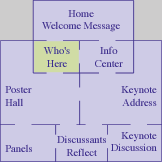|
abstract:
|
Teachers in rural central California face the challenge of providing quality science education to a rapidly increasing number of language minority students. A regional consortium that includes the University of California, Santa Cruz, Life Lab science program and seven school districts have joined together to fulfill this challenge. The LASERS project is (1) implementing systemic change in a science education program that is responsive to the cultural, linguistic, and individual variations among elementary school students; (2) involving schools and the community in a process of systemic educational change; and (3) developing a national model of bilingual science education.
The focus of implementation is on students, teachers, administrators and communities in 50 elementary schools in a rural tri-county area where 66% of the students are Hispanic, 48% of the students are limited English speakers, and 33% of the students are children of migrant agricultural workers. The seven school districts are located in three of the most productive agricultural regions in the world: the Salinas Valley, Pajaro Valley, and Hollister/San Juan.
The project is based on the constructivist principle that science teaching should build on and challenge students' preconceptions and provide experiences that allow them to construct their understanding in a context that is meaningful to them. The goal of LASERS is to make links between school science and the scientific conceptions children have developed in their homes, community, and local ecology. The Life Lab science curriculum, used in the project, teaches physical, earth, and life science through a garden laboratory. This curriculum engages students with the language and process of scientific inquiry in a context that is relevant and comfortable to them. The families of most of these students work in agriculture-related jobs and all have grown up surrounded by fields of fruit and vegetables.
This project is taking a new approach to school improvement by focusing on the total institutional and community system which influences the teaching and learning process. The program involves the whole community--students, teachers, administrators, university researchers, parents, business, and community members--in the process of educational change. LASERS is establishing a rural regional consortium to pool resources among multiple districts; develop school plans that integrate district, state, and national goals; develop a team of teacher leaders who mentor all participating teachers at their school sites; and involve parents and community members in developing school plans, volunteering in the classroom, and in building connections to the home. The LASERS researchers will develop a model for bilingual science education and the systemic change process.
|


